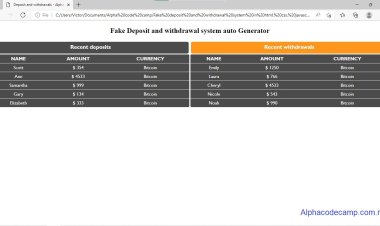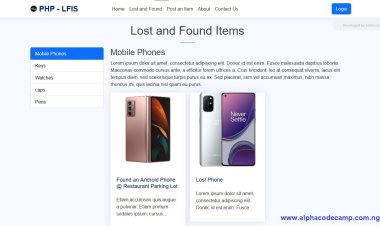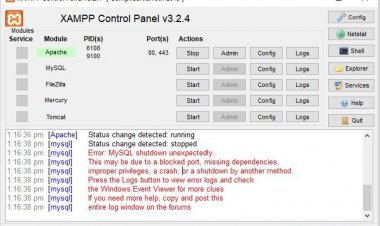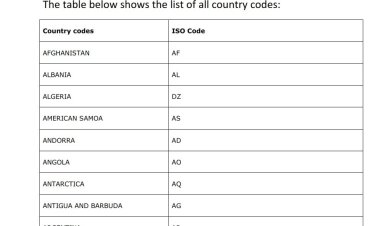What is PHP? Introduction to PHP
PHP is a programming language that is used to create dynamic web pages. It stands for Hypertext Preprocessor. PHP code is embedded into HTML code.

What is PHP? Introduction to PHP
Table of contents
What is PHP?
PHP code is executed on the server and generates HTML output that is sent to the client's web browser. PHP is often used in combination with a web server like Apache, Nginx, or Microsoft IIS, and a database management system like MySQL, PostgreSQL, or Oracle.
Some of the key features of PHP include:
1. Easy to Learn: PHP is relatively easy to learn, especially for developers who are already familiar with programming concepts like variables, data types, functions, and control structures.
2. Cross-Platform: PHP can run on a variety of operating systems, including Windows, macOS, Linux, and Unix.
3. Open-Source: PHP is an open-source language, which means that the source code is freely available and can be modified and distributed by anyone.
4. Extensible: PHP is highly extensible, with a large library of extensions and modules that can be used to add additional functionality to your applications.
5. Server-Side Scripting: PHP is primarily used for server-side scripting, which means that it runs on the web server and generates HTML output that is sent to the client's browser.
In summary, PHP is a popular open-source server-side scripting language that is widely used for web development. It is easy to learn, cross-platform, extensible, and primarily used for generating dynamic web pages and web applications.
What PHP stands for?
PHP is still widely used for web development, especially for server-side programming. In fact, PHP powers some of the most popular websites on the internet, including Facebook and Wikipedia.
PHP is relatively easy to learn, especially if you have some programming experience. It has a simple syntax and is forgiving when it comes to errors, making it a good language for beginners. Additionally, there are many resources available online, including tutorials, documentation, and forums, that can help you learn PHP.
One of the great things about PHP is that it is open-source, which means that it is free to use and there is a large community of developers who contribute to its development and support. This also means that there are many tools and frameworks available that can make PHP development faster and easier.
So, in summary, PHP is still widely used for web development and is relatively easy to learn, especially if you have some programming experience. If you're interested in learning PHP, there are many resources available online that can help you get started. It is also very easy to learn, and there is a large community of PHP developers who can help you if you get stuck. PHP is also very versatile, and can be used for a wide variety of tasks.
PHP syntax is relatively simple and easy to learn, especially for those who are familiar with other programming languages. Here are some basic elements of PHP syntax:
- PHP code is enclosed in <?php and ?> tags. For example:
<?php // PHP code goes here ?>
- PHP statements are terminated with a semicolon (;). For example:
<?php $name = "John"; echo "Hello, " . $name . "!"; ?> -
Variables in PHP start with a dollar sign ($). For example:
<?php $name = "John"; $age = 30; echo "My name is " . $name . " and I am " . $age . " years old."; ?> - PHP comments can be written using either // or /* */. For example:
<?php // This is a single-line comment /* This is a multi-line comment */ ?> - Control structures such as if-else statements and loops are used in PHP for flow control. For example:
<?php if ($age >= 18) { echo "You are an adult."; } else { echo "You are not yet an adult."; } for ($i = 1; $i <= 10; $i++) { echo $i . "<br>"; } ?>
These are just a few basic elements of PHP syntax.
Which is better Python or PHP?
Python is a high-level programming language that is widely used for web development, scientific computing, data analysis, artificial intelligence, and more. It is known for its simplicity, readability, and versatility. Python has a large and active community of developers and has a wealth of third-party libraries and frameworks available that make it easy to develop complex applications quickly.
PHP, on the other hand, is a server-side scripting language that is specifically designed for web development. It is widely used for building dynamic websites, content management systems, and e-commerce platforms. PHP has a relatively simple syntax and is easy to learn, especially for beginners.
So, if your primary focus is web development, PHP might be a better choice because it is specifically designed for that purpose. However, if you are looking for a general-purpose programming language that can be used for a variety of applications, Python might be a better choice because of its versatility and flexibility.
Ultimately, both Python and PHP have their strengths and weaknesses, and the best choice depends on your specific needs and preferences.
Is PHP a programming Language
Yes, PHP is a programming language. It is a server-side scripting language that is widely used for web development. PHP allows developers to write code that can generate dynamic content, interact with databases, and handle user input, among other things. PHP code is executed on the server, which generates HTML output that is sent to the client's browser.
PHP is a popular choice for web development because it is relatively easy to learn and has a large community of developers and resources available. It also has a large number of frameworks and libraries that can make development faster and easier.
In summary, PHP is a programming language that is specifically designed for web development and is widely used for building dynamic websites, web applications, and other web-based systems.
what is php frameworks
A PHP framework is a collection of pre-written, reusable code that provides a structure for building web applications. It is essentially a set of tools and libraries that help developers build web applications faster and more efficiently. A framework provides a foundation for developers to build on, so they don't have to write every piece of code from scratch.
PHP frameworks provide a variety of features and benefits, such as:
1. MVC Architecture: Most PHP frameworks are built using the Model-View-Controller (MVC) architecture, which separates the application logic, data, and presentation layers. This makes it easier to manage complex code and collaborate with other developers.
2. Routing: PHP frameworks provide routing capabilities that make it easy to define URL patterns and map them to specific controllers and actions.
3. Templating: Most PHP frameworks provide a templating engine that helps developers separate the application logic from the presentation layer. This makes it easier to maintain and modify the code.
4. Database Abstraction: PHP frameworks provide a database abstraction layer that makes it easy to connect to and interact with databases, regardless of the underlying technology.
Some popular PHP frameworks include Laravel, Symfony, CodeIgniter, Yii, and Zend Framework, among others. Each framework has its own strengths and weaknesses, so the choice of framework depends on the specific needs and requirements of the project.
What is PHP Laravel
Laravel is a free, open-source PHP web application framework that is widely used for building web applications and APIs. It was created by Taylor Otwell in 2011, and has since become one of the most popular PHP frameworks.
Laravel provides a variety of features and benefits, such as:
- Elegant Syntax: Laravel has an elegant, expressive syntax that makes it easy to write clean, readable code.
- MVC Architecture: Laravel follows the Model-View-Controller (MVC) architecture pattern, which separates the application logic, data, and presentation layers. This makes it easier to manage complex code and collaborate with other developers.
- Blade Templating Engine: Laravel provides a powerful Blade templating engine that makes it easy to create reusable templates and components.
- Artisan CLI: Laravel includes a command-line interface called Artisan, which provides a variety of helpful commands for tasks like database migrations, generating boilerplate code, and more.
- Eloquent ORM: Laravel provides a powerful Object-Relational Mapping (ORM) tool called Eloquent, which makes it easy to interact with databases and perform CRUD (Create, Read, Update, Delete) operations.
- Authentication and Authorization: Laravel provides built-in authentication and authorization features, making it easy to secure your application and manage user access.
In summary, Laravel is a powerful and flexible PHP web application framework that provides a wide range of features and benefits for building modern web applications and APIs. It is widely used by developers around the world and has a large and active community of developers and resources available.

















